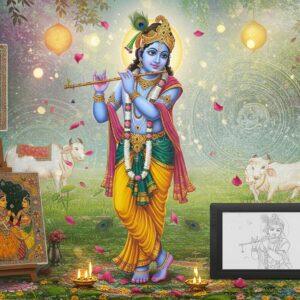
The Shakya clan, originating from the northeastern region of South Asia during the Iron Age, holds a significant place in history as the clan of Siddhartha Gautama, the founder of Buddhism. Their craftsmanship, passed down through generations, reflects deep cultural and spiritual significance. This blog delves into the unique art forms of the Shakya people and the methods employed in their preservation.
Historical Background of the Shakya People
The Shakya people boast a history spanning millennia, with origins tracing back to the Iron Age in northeastern South Asia. Organized as the Shakya Republic, an aristocratic oligarchic republic, their cultural heritage is rich and vibrant, encompassing notable cities such as Kapilavastu, Devdah, and Sankisa. Siddhartha Gautama’s birth and enlightenment are pivotal aspects of Shakya history, and their cultural contributions include significant symbols like the urna and the wheel of Dharma.
Key Traditional Crafts of the Shakya People
Shakya artistry is diverse, encompassing various forms:
- Metalworking: Renowned for their intricate bronze and copper work, Shakya artisans employ time-honored techniques to create elaborate designs. Their metalwork often features religious motifs and symbols, reflecting the deep spiritual beliefs of the community. Discover exquisite metal crafts and ritual items at poojn.in, India’s leading online store for cultural goods.
- Thangka Paintings: These religious scrolls, often depicting Buddhist deities, mandalas, and scenes from the life of Buddha, serve as both artistic expressions and objects of meditation. The vibrant colors and intricate details of Thangka paintings make them highly valued pieces of Shakya art. Explore related devotional art at poojn.in.
- Jewelry: Shakya jewelry showcases elaborate designs incorporating precious stones and metals. Often imbued with symbolic meaning, these pieces represent both artistry and cultural heritage. Find beautiful jewelry and murtis at poojn.in.
- Pottery: From everyday utensils to ceremonial vessels, pottery plays a vital role in Shakya culture. Traditional techniques and designs are employed to create functional and aesthetically pleasing pieces. Delve deeper into the impact of cultural traditions on art at poojn.in.
- Weaving and Textile Arts: Shakya textiles showcase traditional patterns and materials, each carrying unique cultural and symbolic meanings. The weaving techniques have been passed down through generations, preserving the artistry and heritage. Discover the rich symbolism in traditional Indian arts at poojn.in.
Techniques and Materials in Shakya Crafts
Shakya crafts utilize distinctive techniques and materials:
- Lost-wax casting: This ancient method, employed in metalworking, allows for intricate detail and high-quality pieces. It involves creating a wax model, encasing it in a mold, and then replacing the wax with molten metal.
- Natural materials: From special clays for pottery to natural pigments for Thangka paintings, Shakya artisans prioritize natural materials. This reflects their reverence for nature and their commitment to traditional methods.
- Traditional tools: Passed down through generations, these specialized tools ensure authenticity and preserve the connection to ancestral techniques. Their use maintains the unique characteristics of Shakya crafts.
- Embroidery and weaving: Skillful embroidery and weaving techniques, incorporating symbolic patterns and colors, are central to Shakya textile arts. These techniques require both artistic talent and a deep understanding of cultural traditions.
Cultural Significance and Symbolism
Shakya crafts hold deep cultural and religious meaning:
- Thangka Paintings: Used in meditation and spiritual practices, Thangka paintings serve as visual aids for contemplation and connection with the divine. They represent important Buddhist figures and concepts.
- Jewelry and Textiles: Motifs like the lotus flower, imbued with auspicious meaning, frequently adorn jewelry and textiles, adding layers of symbolism to these crafts. They represent purity, enlightenment, and rebirth.
- Cultural preservation: These crafts play a crucial role in maintaining the Shakya heritage and identity. By creating and using these crafts, the Shakya people keep their traditions alive and pass them on to future generations.
Preservation and Modern Adaptations
The Shakya community actively works to preserve their artistic heritage:
- Apprenticeships and cultural festivals: Through apprenticeships and participation in cultural festivals, traditional skills are transmitted to younger generations, ensuring the continuity of these art forms. These initiatives provide platforms for learning and showcasing Shakya arts.
- Modern technology: While honoring tradition, some artisans integrate modern technology and styles to create contemporary pieces that appeal to a wider audience. This allows them to innovate while preserving the essence of Shakya crafts.
- Cultural organizations and government support: Cultural organizations and government initiatives provide essential support for Shakya artisans, promoting their work and providing resources for its continuation. This support is crucial for the survival and flourishing of these traditional arts.
Conclusion
The traditional arts and crafts of the Shakya people are a testament to their enduring cultural heritage. These artistic expressions, imbued with history, symbolism, and spirituality, offer a glimpse into the rich traditions of this ancient clan. By supporting Shakya artisans and appreciating their work, we contribute to the preservation of a vibrant cultural legacy.


